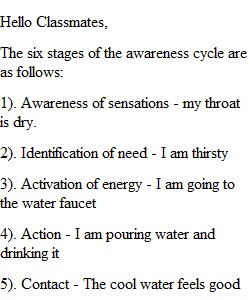


Q Humanistic therapies focus on the quality of the client’s subjective, conscious experience. Where traditional psychoanalysis focuses on early childhood experiences, humanistic therapies are more likely to focus on what clients are experiencing here and now. Examples include: Client-Centered Therapy Carl Rogers (1902–1987) Gestalt Therapy Fritz Perls (1893–1970) The following is from “Gestalt Psychology” written for Monkeyshines on Health & Science (1997). Gestalt is a German word meaning "whole." Max Wertheimer, Kurt Koffka, and Wolfgang Kohler considered themselves to be Gestalt Psychologists. Unlike the Behaviorist Psychologists (B.F. Skinner), the Gestalt psychologist sees the human being as interacting actively with his or her environment. Gestalt psychologists believe that it is the organization of parts and not just these separate parts individually which make something what it is. In other words, we are who we are because of all our experiences and the ways we interact with and react to our environment (our friends, teachers, parents etc.). In order to understand this idea, think of all of the parts it takes to make a bicycle. There are handlebars, a chain, tires, and a frame. Of course, the bike is made up of all of these metal and rubber parts, but it is not the parts themselves that make the bike! Instead, it is the way these parts are assembled and work together that make the whole thing a bicycle. This is how Gestalt psychologists view human beings. We are who we are because of what we experience throughout life and how we deal with those experiences. Read Gestalt Therapy: An Alternative Addictions Treatment Download Gestalt Therapy: An Alternative Addictions Treatment, written for the Addiction Letter (1995). In a 250-300 word response, answer the following questions: (1) What are the six stages of the awareness cycle? (2) What are the steps in the ten-step program? (3) Discuss your reaction to the presented material. Do you think that Gestalt therapy would work for addictive behaviors? Why, or why not? Respond to at least two other students in 75-100 words. Note: Click the options button in the upper right corner to see the rubric for this exercise.
View Related Questions